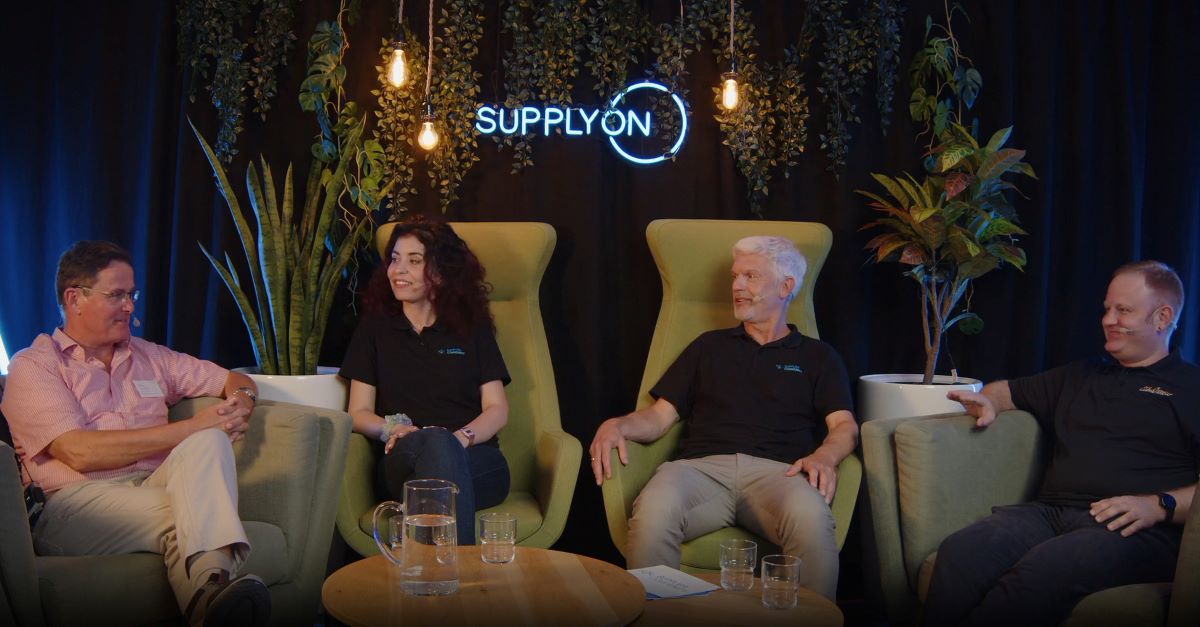Successful supplier rollout in China: Strategic onboarding in the Middle Kingdom
![]()
January 1, 3:55 a.m.
Just back from a New Year’s Eve party and full of excitement, I take a look at the Seeburger EDI monitor and press the refresh button again. Then once more. Then again and again. But nothing happens.
4:09 a.m.
Still nothing. I’m starting to get a little nervous. My customer in Shanghai wanted to go live at 10 a.m. local time. That was nine minutes ago, which seems like an eternity to me.
4:13 a.m.
Nervously, I press the refresh button on the EDI monitor every 20 seconds. Finally! A delivery instruction and three call-offs. Status: “SUCCESS!” I quickly log into SupplyOn to check if posting is correct and find everything is just as planned. Relieved, I pick up the phone to call my Chinese colleague and tell him about the successful posting. “Liang, the initial messages were booked successfully. Let’s go!”
Now a flood of messages come in. Within the next hour, hundreds of delivery instructions and JIT messages flow from China to the customer’s EDI data center, then directly to the SupplyOn server and then on to 108 local suppliers, the majority of which are in China. The first suppliers will now start reviewing the information and creating the initial advance shipping notifications. But I won’t get to experience any of that since I am already off to the land of dreams, tired but content. Now our team in China can take over.
Over the duration of the six-month project, we developed a proficient, Chinese-speaking rollout and support infrastructure to migrate all 108 (!) suppliers from the existing WebEDI portal to SupplyOn. The suppliers received extensive training for this and were supported during the implementation phase as well as operational use. Following the same project template, we’ve now successfully implemented SupplyOn as the process platform for five of the customer’s Chinese plants with more than 180 suppliers.
This article provides insight into the distinctive characteristics involved in a rollout in China and serves as a brief guideline for a successful supplier rollout in the PRC.
An intercultural project team overcomes all obstacles
For such a far-reaching project, managing the rollout from corporate headquarters should be avoided whenever possible.
Not only do buyers and dispatchers usually know their suppliers very well and maintain close contact with them, but a Chinese sparring partner who demonstrates responsibility for the rollout is in a much better position to overcome the cultural aspects and language barriers than a German “long nose,” as the Chinese like to refer to us Europeans.
In this regard, a key first step is to internally document who is responsible for which tasks and to continually coordinate this with the Chinese manager. Also never forget to provide the project team with background information about the project and to explain in detail its benefits and the solution. A sound change-management process is an essential step for driving the project and tailoring the process to meet the realities of electronic communication. People the world over are hesitant to accept change, a fact that must be even more carefully considered in China, given its thousands-year-old culture.
Ideally, everyone involved in the process – regardless if from purchasing, logistics or quality – personally benefits from the successful rollout of a supplier. Participants may benefit from individual goals set in their target agreements or a small incentive. In taking this approach, you will benefit from having all departments work together toward one goal and minimize internal friction. The project team should meet once a week in regularly held (web) meetings to check the progress of the project against the plan and discuss possible deviations.
Features and functions: Do you only understand Chinese?
One point I’d like to make right from the start: Software is really just a tool to convey the added value of a good process. An intuitive solution in Chinese is, however, still indispensable to success in China. Many Chinese supplier companies have little experience with software portals, and most employees who work with such systems speak very little English. It therefore goes without saying that the solution also has to be made available in Mandarin.
With portal or SaaS solutions in particular, the regional specifics of the Chinese Internet must be observed. A special infrastructure that enables high-performance use without significant firewall impairment is, as a result, essential when deciding the pros and cons of a solution provider.
Master data is the root of success
At the beginning of every rollout, screening, consolidation and analysis of master and dynamic data need to be completed. This is no different in China. The first step is to collect proper address data and, if necessary, to supplement this information or to contact suppliers for an update.
In this regard, it is useful to generate a unique key for the supplying company. A supplier number alone is usually not sufficient due to different supplier locations or contractual conditions.
Since the DUNS number is a unique identifier used worldwide and by SupplyOn, the DUNS number was selected as the primary number in the project. One problem that often arises here is that Chinese companies frequently don’t have a registered DUNS number. It is however, often possible to find the number relatively easy by using the Bisnode D&B in China. For this step, the buying company can take the lead and accordingly relieve the supplier of this task.
This data should be stored centrally in a list saved to a document-sharing system and regularly reviewed for completeness.
Once the information has been collected, it then needs to be screened and cleard. Are there inactive suppliers, duplicates or suppliers that will soon be removed? This information should ideally be reconciled with the network of your solution provider. (Doesn’t your provider already have a network of more than 20,000 suppliers? 😉 ).
Indeed, it is much easier for suppliers who are already registered to use the system, since initial registration and training for them is considerably easier. Hence you don’t begin at square one but start off with solid supplier base.
Plan your rollout and roll out your plan
A rollout should be well planned before approaching the first supplier. A detailed wave plan and a comprehensive communications concept have proved to be successful tools in this regard. Essential questions to ask include: Which suppliers with an existing, solid business relationship might serve as pilot suppliers before going live?
Which strategic suppliers would I like to have on the platform first? Are there suppliers with high document or transport volumes who could help me realize quick wins? The details of the scheduled wave plan depend on the number of suppliers. The plan then forms the basis for the structure of the rollout and guides the rollout process.
Ni hao: We’d really like to launch a new system
I recommend you directly contact the supplier when you first start your communications concept. Have your buyers or planners contact their counterpart by phone or broach the subject at a yearly meeting or during an on-site appointment.
Doing this makes it easier to tackle the subsequent letter, which you should then ideally send by mail. A brief two-page letter (you could also send it by e-mail as a follow-up) provides the decision-maker an initial overview of the objective and the benefits such electronic communication can deliver. Ultimately, a new system not only represents an internal change for your company but also an adjustment for the supplier – one that needs to be planned. In your letter, you should also differentiate between suppliers who are already familiar with the solution that will be implemented and those who are new to the process.
There are a wide range of options you can then follow. Invite suppliers (not those competing with one another) to a supplier day, conduct web meetings and so on; the project team should decide what activities should take place. This will undoubtedly depend on the relationship with the supplier.
Use your ideas to develop a communications concept:
- What is the next step? (for instance, send a letter)
- Who is responsible?
- Who will be informed or copied on an e-mail?
- By when should the action be completed for which wave?
This communications concept should also be discussed regularly and any deviations documented.
Since your buyers will probably not have time to make follow-up calls regarding the submitted registration documents, we recommend hiring a dedicated call center to contact the supplier in the local language. It is essential that the call center staff be provided with detailed information about the project so they can give suppliers competent answers to their questions.
Particularly in China, reaching a decision about registering can be a very long and drawn out process because a superior, and even this person’s superior, must provide his or her approval. For this reason, it is extremely helpful to have a dedicated team that can politely but assertively guide the supplier to registration.
A well-trained supplier is the key to success
Especially in China, where suppliers are often technically not highly advanced, it is imperative to explain repeatedly and in detail how the software is used. Suppliers should not only receive a comprehensive, illustrated manual (in Chinese, of course), they should also take part in dedicated training activities. A mixture of classroom, online and on-site training is ideal for this.
Suppliers unfamiliar with the portal should participate in at least one of the training courses before being introduced to the software. The courses should be conducted by an experienced trainer who has very sound knowledge of the solution and processes of the customer.
Step by step: recording status and progress
Tracking progress is essential for maintaining an ongoing overview of the current project team status. To maintain an overview, information can be entered into an Excel sheet and then discussed at regular weekly meetings.
- Supplier has been identified.
- Master data is available.
- Supplier has been informed.
- Letter was received.
- (Participation in informational event took place.)
- EDI agreement has been accepted.
- Rollout has started (portal).
- Registration is complete.
- Participation in training has occurred.
- Registration is successful.
- Connectivity has been established.
- Live
3 … 2 … 1 … Go!
Slow down … ! Before you implement the solution with your first supplier, give some thought to your comprehensive support concept.
You should be able to answer these common questions:
- Who will provide the supplier support in the event of technical questions? You certainly don’t want your buyers to have to answer questions all the time like, “How does this work? or Where do I have to click?”
- How to I ensure that adequate and prompt help is available for my supplier, even outside of my normal business hours?
- How do I keep the support team up-to-date?
- How will I provide comprehensive support to suppliers who don’t speak English or German?
- How do I ensure internal technical support is provided for nonposted messages?
Even if the cultural differences are at times very challenging and don’t always make it easy to achieve a successful rollout, China is and will remain an exciting place! And you might even have the opportunity to visit the country during an onboarding project! I wish you the best of luck for a successful supplier project in the Middle Kingdom.
谢谢 (Thank you) for your time in reading this,
博福润 (Florian Boehm)
p.s. Have a colleague give you a Chinese name that sounds phonetically like your real name. Mine stands for something along the lines of “versatile knowledge,” “fortune and blessings,” “profit.”



